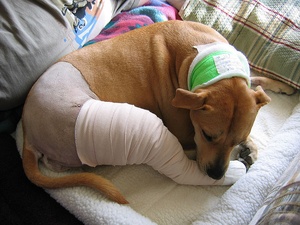We train our dogs to do certain things, like sit, stay, lay down, retrieve or even run through an agility course. Training a dog takes patience and persistence. It means providing consistent clues that your dog will eventually come to understand if done in the same manner. But I’ve recently come to wonder, have I trained my dog, or has she trained me?
Every time we sit down to eat dinner, our dog Daisy runs to the front door, whips around and stares at us. Invariably, one of us says, “Daisy needs to go out” and my daughter groans, gets up and lets her out. Most of the time, Daisy does her business, but sometimes, she runs out to the middle of the yard, expecting my daughter to follow her and hopefully play. This has led us to believe that Daisy’s behavior of running to the door and then staring us down, has trained us to respond in a particular way, and has us wondering if she brags to the other dogs that she has trained her human to stand up and open the door on command.
Likewise, Trixie the Wiener Dog has my husband trained to take ...






